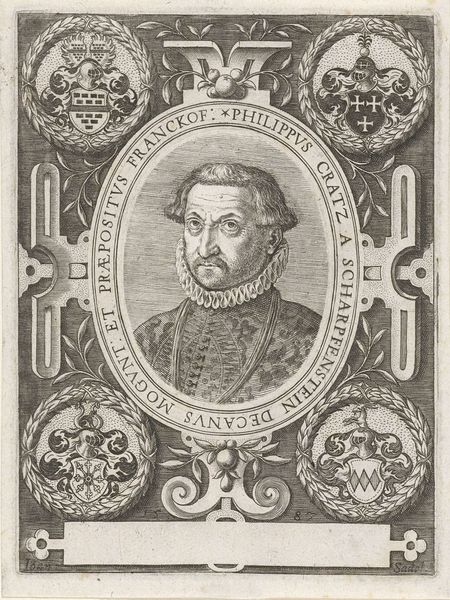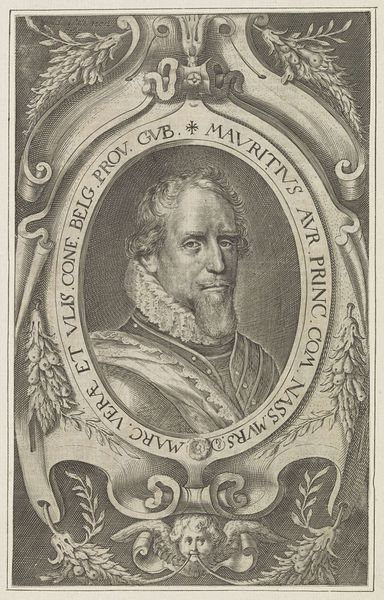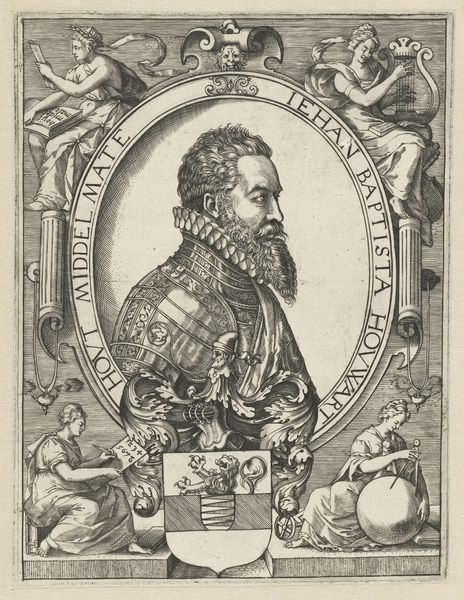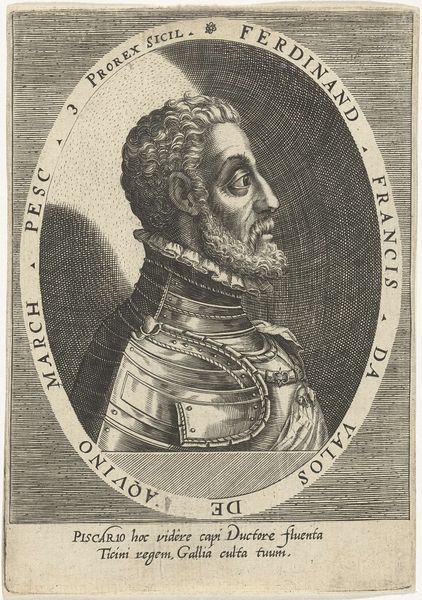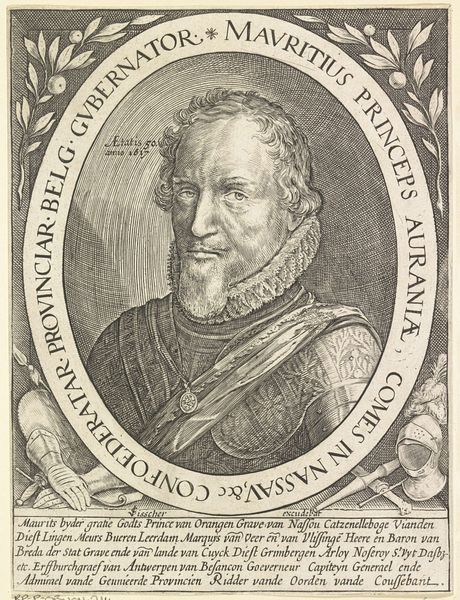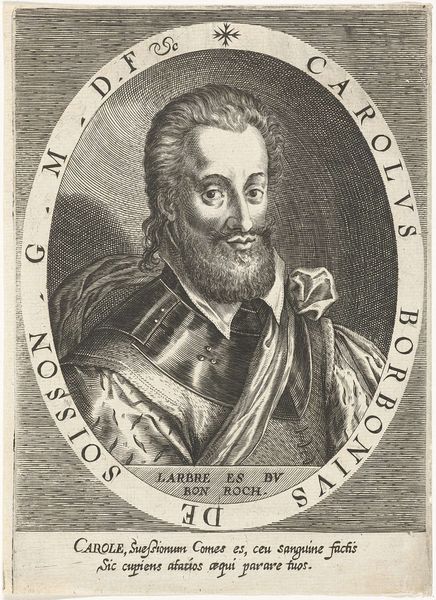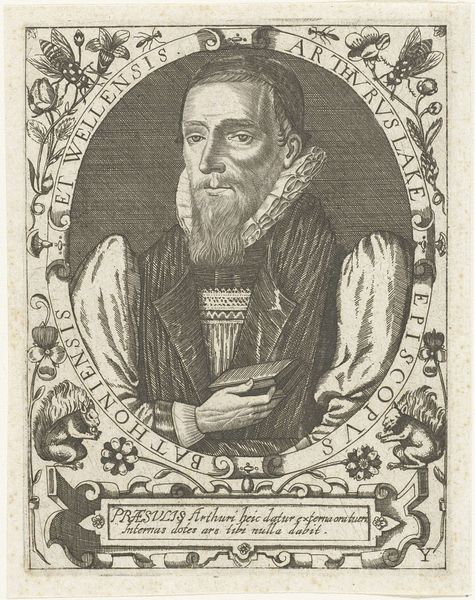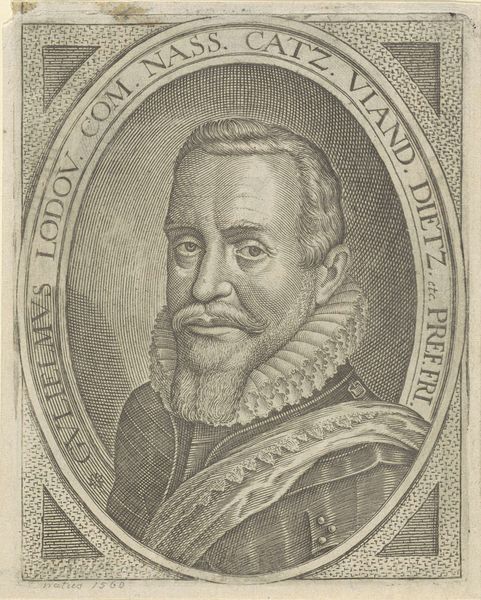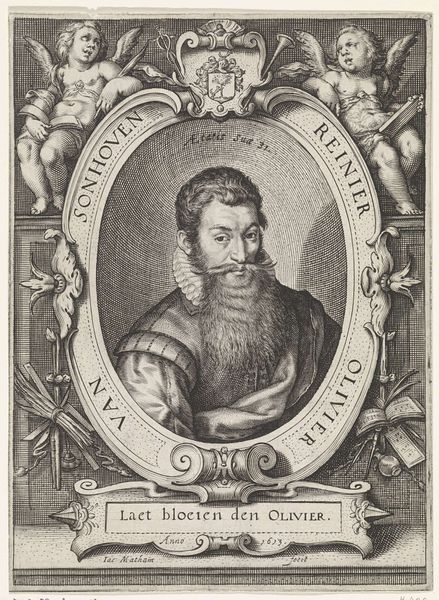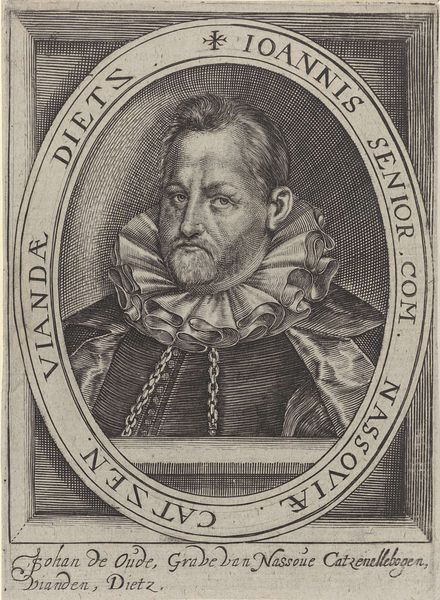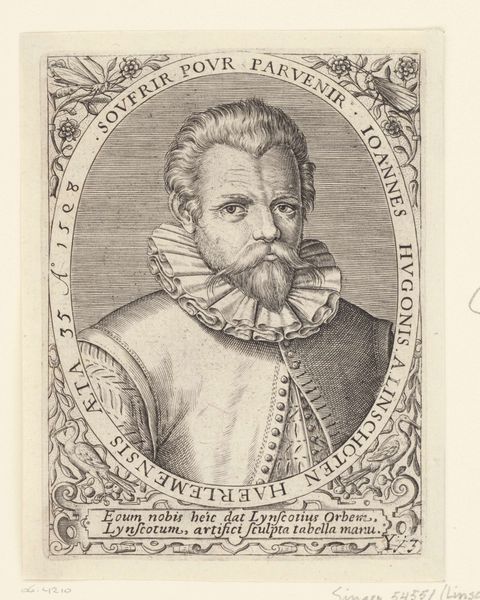
print, etching
#
portrait
#
baroque
# print
#
etching
#
figuration
#
history-painting
#
academic-art
Dimensions: height 147 mm, width 109 mm
Copyright: Rijks Museum: Open Domain
Editor: We’re looking at “Portret van Henricus Corvinus,” an etching dating between 1626 and 1670, by Johannes Valdor II. It has this, like, ornate border, framing a serious-looking gentleman. What strikes me is how incredibly detailed it is for a print. What catches your eye? Curator: Oh, the frame definitely pulls you in, doesn't it? I think what captivates me is the sheer weight of history it holds. Look closely, and tell me what kind of history? I feel like I'm peering into the 17th century! This Henricus Corvinus seems a learned chap; someone with a possible penchant for collecting heraldry, botanicals, or both. It's more than just a portrait, it's an elaborate badge of honor. Notice how the inscription praises his herbal knowledge? The entire thing sings of intellectual pride. It's a carefully crafted statement, and also what do you notice around the figure of Corvinus? Editor: Well, the laurel wreath… and the crossed swords with the bird… it makes him look very important and sort of intimating or stoic as if someone might approach him on political terms. The flowers soften it somewhat and make the whole portrait decorative? Curator: Exactly! The stern gaze combined with all this decorative framing creates an interesting tension, doesn't it? These choices place him firmly in a historical narrative. Perhaps he wasn’t such an easy person in social interactions, the type you need to take some care. Almost as if it's designed to manage how we perceive him. The artist makes a powerful argument using ink and paper. Do you find the same impression looking closer now? Editor: I do now. I never thought of portraiture as making an argument, but seeing all these different elements… It's less about capturing a likeness and more about crafting a legacy. Thanks. Curator: Glad you could see through that and put it into a personal understanding.
Comments
No comments
Be the first to comment and join the conversation on the ultimate creative platform.
